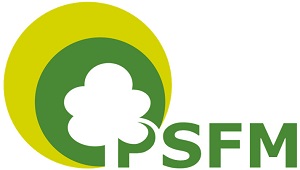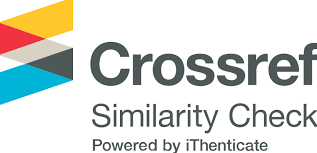NGHIÊN CỨU NHÂN GIỐNG IN VITRO LOÀI GỪNG ĐEN (DISTICHOCHLAMYS CITREA) BẢN ĐỊA
Từ khóa:
Gừng đen (Distichochlamys citrea), nuôi cấy mô, in vitro, nhân giốngTóm tắt
Gừng đen (Distichochlamys citrea) là một loài thực vật đặc hữu mới ở Việt
Nam. Hiện nay, trong tự nhiên Gừng đen (D. citrea) được phân bố hẹp và số
lượng ít. Tinh dầu được chiết xuất từ thân, rễ và lá với các hoạt chất hóa học
như 1,8-cineole (30,7-43,7)%, β-citral (1,6-14)%, a-citral (2,5- 20,9)% và
neryl acetate (4,1-11,1)%, α-pinene (1,8-4,5)%, β-pinene (2,8-7,0)%,
D-limonene (1,2-3,3)%, Geraniol (4 , 0-5,9)%, Neryl acetate (4,1-11,1)%,...
Hoạt chất trong Gừng đen rất tốt cho sức khỏe và có thể được sử dụng để
làm dược liệu, mỹ phẩm, thực phẩm. Nhân giống Gừng đen in vitro hiệu
quả bằng cách: Sau khi khử trùng, chồi được tái sinh trên môi trường (MS
+ 5g/l Agar + 30g đường + 100ml/l nước dừa + 1mg/l PVP + 2mg/l BAP +
Kn 0,2 mg/l), chồi sau khi tái sinh được nhân lên trên môi trường: (MS +
5g/l Agar + 30g đường + 100m/l nước dừa + 1mg/l BAP + 1g/l Casein +
0,2mg/lKn). Rễ được hình thành trên môi trường (MS + 30g đường +
100ml/l nước dừa + 0,5mg/l NAA). Cây trồng trong vườn ươm trên giá thể
(mùn dừa: trấu hun: đất đồi sâu) tỷ lệ (2: 1: 1) và che 75% ánh sáng mặt
trời. Sau khi trồng 10 ngày phun phân bón Grownmore (30N: 10P: 10K)
nồng độ 0,5g/l; 7 ngày/lần. Sau 3 tháng, cây con phát triển tốt, với 2,7 chồi
mới; 2 lá mở cây; Cao 138 mm; Lá dài 82 mm và rộng 52 mm. Lá màu
xanh tự nhiên.
Tài liệu tham khảo
1. Đỗ Năng Vịnh, 2005. Công nghệ tế bào thực vật ứng dụng. NXB Nông nghiệp, Hà Nội.
2. Phạm Việt Tý, Hồ Đức Việt, Lê Quyết Thắng, 2015. Nghiên cứu thành phần hóa học của tinh dầu thân rễ Gừng đen (Distichochlamys citrea) tại một số tỉnh miền Trung Việt Nam. Tạp chí khoa học Trường Đại học An Giang. J. Sci. Viet. 8(4):60-65.
3. Phạm Việt Tý, Nguyễn Thị Hoài, Nguyễn Viết Khẩn, Hồ Việt Đức, 2014. Bước đầu nghiên cứu thành phần hóahọc của tinh dầu Gừng đen (Distichochlamys citrea) thu hái tại A Lưới - Thừa Thiên Huế, Tạp chí Y Dược học, Trường Đại học Y Dược, Đại học Huế, Số đặc biệt, tr. 43-48.
4. Chaying Guan,1,*Weiguo Liu,2,*Yongfang Yue,1Xiao-Jia Wang22014. Inhibitory effect of β-elemene on human breast cancer cells. Int J Clin Exp Pathol. 7(7): 3948-3956.
5. Juergens UR, 2014. Anti-inflammatory properties of the monoterpene 1,8-cineole: current evidence for
co-edication in inflammatory airway diseases. Drug Res. 64(12):638-646.
6. Le Thi Huong1 , Dao T. M. Chau1 , Nguyen V. Hung1 , Do N. Dai2 * and Isiaka A. Ogunwande3, 2017.Volatile constituents of Distichochlamys citrea M. F. Newman and Distichochlamys orlowii K. Larsen & M. F. Newman (Zingiberaceae) from Vietnam. Journal of Medicinal Plants Research. Vol. 11(9), pp. 188-193.
7. Moteki, H., Hibasami, H., Yamada, Y., Katsuzaki, H., Imai, K., & Komia, T. 2002. Specific induction of apoptois by 1,8 cioneole in two human leukemia cell lines, but not a in human stomach cancer cell line. Oncol Rep 9, pp. 757-760.
8. Newman M.F., 1995. Distichochlamys, a new genus from Vietnam. Edinburgh Journal of Botany 52: 65-69.
https://www.ncbi.nlm.nih.gov. National Center for Biotechnology Information.












